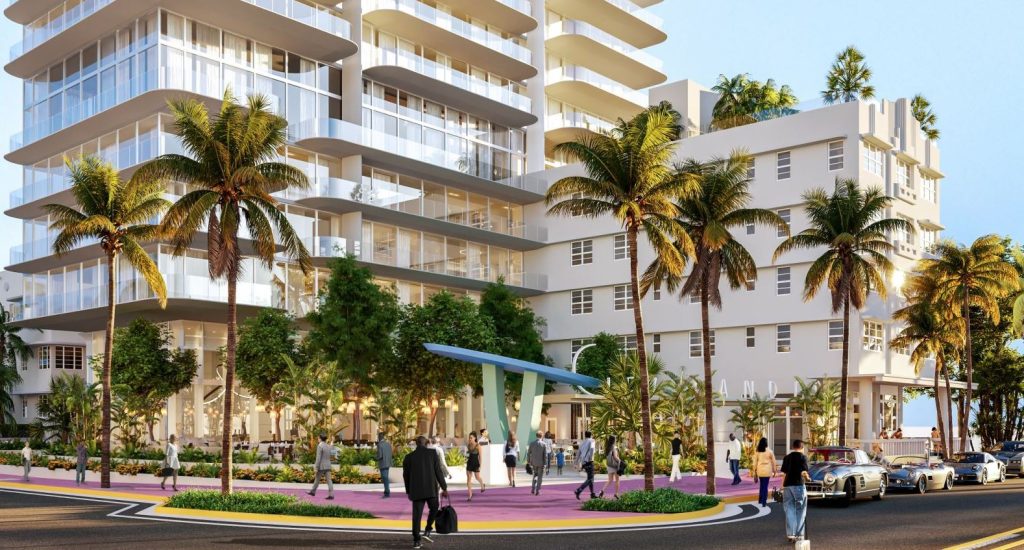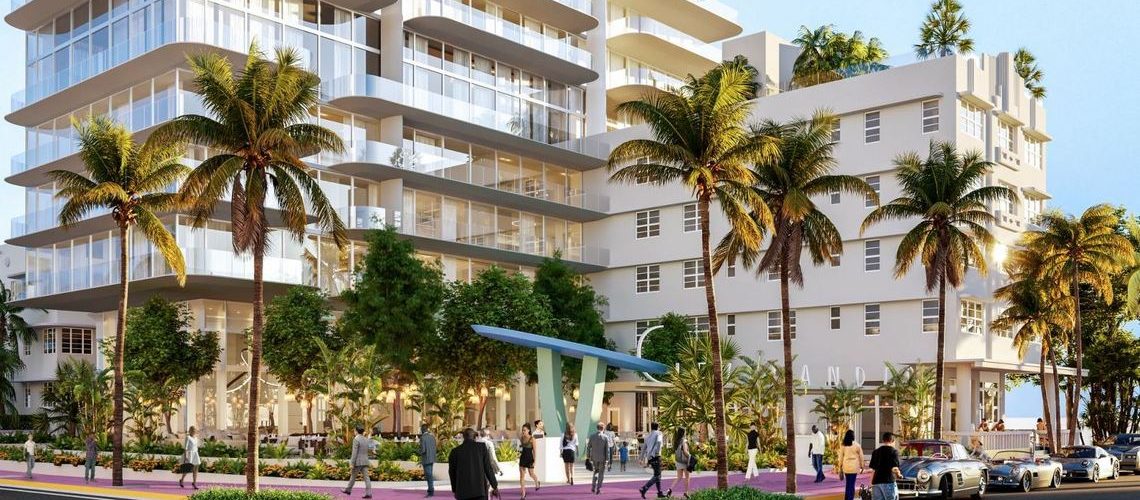In a surprise press release issued this morning, the owners of the Clevelander South Beach Hotel and Bar have unveiled plans to replace the non-historic portion of their property at 10th Street on Miami Beach’s iconic Ocean Drive with a 30-story residential tower.
The Clevelander, located in the MXE zoning district, is subject to specific land-development regulations, including a maximum allowed height of 50 feet, a Floor Area Ratio (FAR), capped at 2.0, and a density limit of 100 units per acre.
Instead, the property owners, Jesta Group from Montreal, Canada, intend to take advantage of Florida’s newly-passed Live Local Act. This legislation, signed into law by Governor DeSantis earlier this summer, aims to remove perceived zoning hurdles by removing local height and density regulations, in order to facilitate the construction of more residential housing. The Act was sponsored by freshman State Senator Alexis Calatayud, of South Miami, with the stated intent to increase housing affordability and availability.
As reported by the Miami Herald, the planned project is set to include 137 units. Of these, 55 units (or 40%) are to be designated as affordable rentals, while the remaining 82 units will be available for purchase as condominiums.
Designed to be in compliance with the Live Local Act, the project defines affordable housing as costing no more than 30% of the gross income for individuals or families earning up to 120% of the Area Median Income (AMI). For a family of four in the Miami-Miami Beach-Kendall area, the AMI is approximately $123,000, setting the maximum yearly rent for affordable units at $36,900, or just over $3,000 per month.
This is the first project publicly unveiled in Miami Beach that utilizes the Live Local Act.
A point of potential confusion in the project’s planning involves the terms ‘density’ and ‘intensity,’ which are often misunderstood by policymakers. Density is generally measured as the number of residential units per acre, and the Live Local Act preempts municipal and county governments from imposing density restrictions. However, the Act does not address ‘intensity,’ a term used by the City of Miami Beach to regulate the overall size of a building.
Other existing regulations that would still need to be followed include that the minimum unit size must be at least 550 square feet, and the average unit size must be at least 800 square feet.
In addition to FAR limits, Commission approval would likely be needed to unify the owner’s two properties: the Clevelander on Ocean Drive and the Essex House on Collins Avenue. This is despite their 2019 Air Rights Easement over Ocean Court for an unbuilt pedestrian bridge linking the two properties.
According to the city’s adopted 2040 Comprehensive Plan, the MXE zoning district has a density limit of 100 units per acre. Nevertheless, the Live Local Act allows for the highest citywide density—150 units per acre in this case. This density is also permitted in the Town Center (TC-C, TC-1), located along 71st Street in North Beach, and the High-Intensity Commercial (CD-3) districts, located along Lincoln Road, 17th Street, and 41st Street.
We have yet to hear back from city officials regarding any submitted plans. It’s worth noting that approval from the Historic Preservation Board will not be required. This means that the Certificate of Appropriateness criteria, which help ensure that new construction is compatible with the existing historic district, will not have to be satisfied. Additionally, at this time, it’s unclear whether Planning Board approval will be required either.
The Clevelander is located within two historic districts, the National Miami Beach Architectural District, designated in 1979, and the Local Ocean Drive/Collins Avenue District, designated in 1986.


